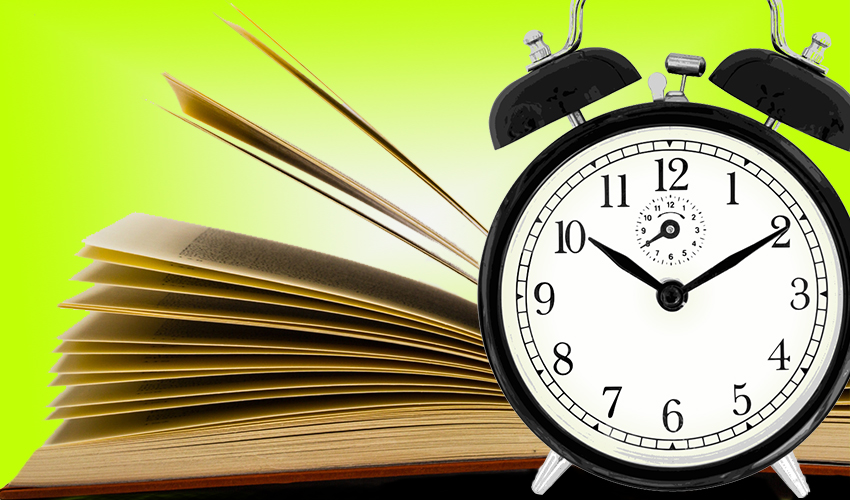
This blog post covers the essential reasons why you need to master the art of speed reading as a voiceover.
When it comes to commercial voice-over….. time is money.
Not only the time spent in the studio in the process of recording the commercial, but more importantly to the time spent delivering the message within the commercial itself. More often than not we have to deliver the lines very quickly indeed.
So it is vital that as a commercial voice-over artist, you really do need to be good at speed reading.
How Do We Get Good At Speed Reading? PRACTICE!
Reading at speed in a commercial is a skill that requires a lot of practice.
“When reading at speed, the chance of stumbling increases….”
There are 5 main reasons that people stumble when reading at speed and they are:
NOT BEING WARMED UP PROPERLY
LACK OF CONCENTRATION
UNFAMILIARITY WITH THE COPY
POOR PUNCTUATION
NOT SCANNING AHEAD
Let’s look at each in turn:
Speed Reading – Not Being Warmed Up Properly
Speed reading requires the vocal folds and muscles of articulation to be fully warmed up. How do we do this?
- Pencil Test – Clamp a pencil between the teeth and read aloud
- Tongue Twisters – Combine several to include all the diphthongs
- Humming – Do this with your tongue placed on the roof of your mouth
- Scales and Vocal Sweeping – Mouth slightly open
Speed Reading – Concentration
Speed reading requires large reserves of mental energy and concentration:
- So, huge focus is required.
- Clear your mind before you start.
- Eliminate all other thoughts.
- Don’t think about what’s for lunch! Or whether you left the iron on at home!
- Practice Yoga or take meditation classes to help you to quickly get into this mindset.
Speed Reading – Familiarity With The Copy
You need to read the copy silently at least three times. This will ensure complete familiarity with the words and their context.
“Understanding the text is a key component of speed-reading.
When you understand the message, it’s purpose and your role you can then determine not only your approach and attitude but also which bits you can throw away and which bits you need to lean on….”

Speed Reading – Poor Punctuation
More often than not these days, copy arrives which has been poorly punctuated. Punctuation is your musical notation. It lends sense to the copy. It determines the rhythm and flow.
You need to ensure that the punctuation is spot on. If it isn’t, you will need to insert your own punctuation marks into the copy.
Next, mark up your copy with stress, pause and inflection marks. Stress marks go under the words, pause marks in between the words and inflection marks go above the words.
Use single or double spacing and 12 point Arial.
If reading from a screen, make the font size large and fill the screen and use your mouse to scroll down the script.
Speed Reading – Scanning Ahead
Processing is the final main reason that people stumble when reading.
By failing to scan ahead on the line you are reading, you are not giving the brain enough time to process what is coming up.
When the words arrive in the visual cortex late, the brain does not have sufficient time to process the words, to enable you to formulate the correct mouth movements in order to speak them.
To overcome this problem you need to practice line scanning and speed-reading, initially on a daily basis.
Speed Reading – The Sciencey Bit!
At the back of the eye on the retina, there is a small collection of Cells known as the Fovea Centralis. It’s a small, central pit composed of closely packed cones and is located in the center of the macula lutea of the retina.
Your two eyes converge to enable bifoveal fixation, which is necessary for achieving high stereoacuity. The kind of acuity or detail required when reading at speed.
These are the cells that identify the shapes of words and letters and transmit them to the brain for processing.
In order to read fluently and at speed your eye needs to travel along the line allowing the fovea to identify the words and letters which in turn are transmitted to the short term memory buffer and then on to the brain for processing.
“At first, reading at speed will be quite challenging but with practice you’ll find that you will soon be able to achieve a reasonable degree of speed and accuracy…”
When practicing you should aim to be looking at three or four words ahead of where you are speaking. As you improve you will be able to scan ahead perhaps one whole line at a time.
The benefit of doing this is that you are giving your brain the ability to prepare for prosody and punctuation and also to calculate breathing points and meaning. The whole process of reading aloud is a fantastically complicated exercise involving complex brain function and many muscles
When it comes to the heat of battle and you are in a studio under pressure of time, with a client, producer, director and sound engineer in the control room on the other side of the glass, you will be very glad that you practiced the skill of speed reading.
Generally I do not read post on blogs, but I wish to say that this write-up very pressured me
to check out and do so! Your writing taste has been surprised me.
Thanks, quite great post.
This is a good and very practically useful article, as I remember I used to have a bit of a hick with speed reading until learnt about scanning 3-4 words ahead at a time and with this practice I could honestly vouch for the advice given hear that it works.
There is always room for more improvement, therefore I will be putting the rest of your advice into practise.
Thank you Peter
Dear Mr. Dickson and GFTB team,
Very useful advice, especially for so-called cold reeading.
When talking about Speed Reading in this article, are you referring to ordinary commecial copy for TV or Radio Commercials or the incredibly fast and almost incomprehensible warning text, delivered at robot speed, which comes at the end of commercials for pharmaceutical products, such as “do not self medicate, consult a doctor before taking any medication and read the package leaflet first”?
Do you perhaps provide samples of commercial copy for speed reading practice with stipulated time limits e.g. maximum 5 seconds, 10 seconds etc.?
This is very welcomed advice. I will begin practising. Thank you.
Thank you Very Helpful.
This is so helpful for a beginner. The science fascinating too. I blimmin LOVE speed reading and have always enjoyed sight-reading books/scripts for fun, even to myself, but have to admit to only 4 or 5 words ahead. My challenge is for a line ahead while keeping the natural, personal, conversational element real. Thank you.
Practising this everyday in the bathroom…. 🙂
Interesting, good to reminded to practice!!
Ive always struggled a bit with my reading so this is quite a daunting thing for me to try. I will give my all and try it several times a day. Are there any specific tips, practices, drills that can help?
Thank you!
Thank you for another great blog, very helpful indeed. Feed the fovea : ))
Awesome tips ,
I am a beginner, I have been practicing for 30 mins every day and it has improved. I think I will try mediation before hand to focus the mind as my concentration starts to waver about 15 mins in -which is where I start making mistakes .
Also reading 3 times to myself before starting sounds like it could really help .
Thank you 😉
So helpful thank you
Thanks very useful.
One of the wonderful things about where I trained as an actor was the stress that put upon reading at speed, cold readings, and memorising (and reciting) poetry. I would consider myself a very good speed reader now.
Thanks again Peter et al.
We were taught cold reading as a skill at drama school, but nominally to prepare us for last minute auditions. Which is a fab skill and need in itself.
Since beginning my VO journey, especially my re-training in relying on my voice and nothing else, speed reading is another world.
Thank you for this article, it has helped me refocus my upskilling as I continue the journey. 🙂